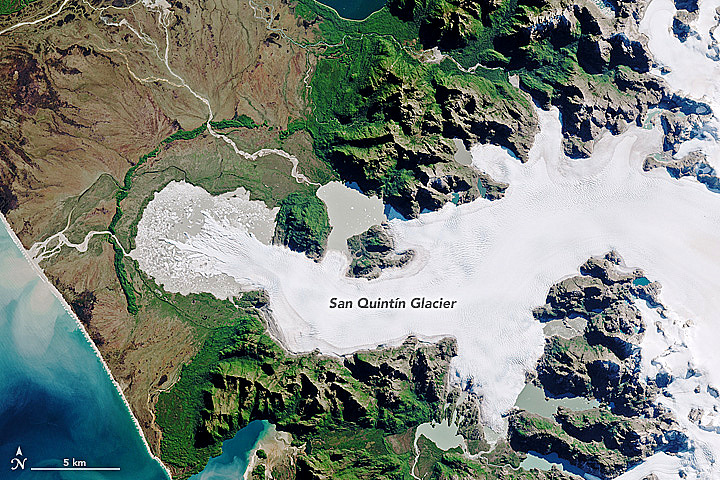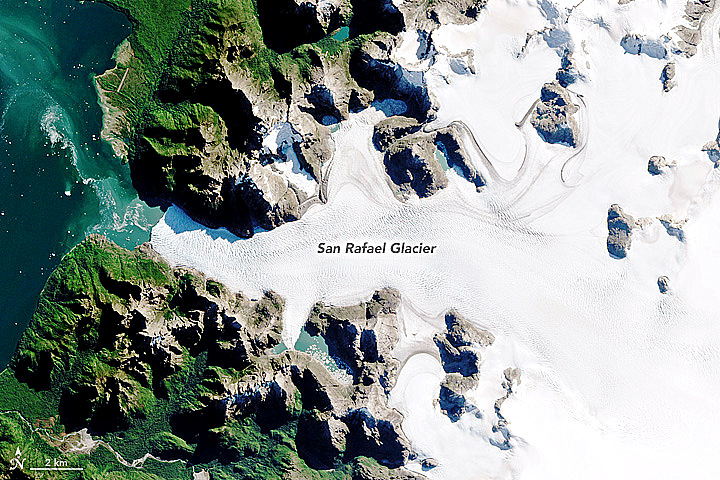A Tale Of Two Glaciers
Cloud-free image, North Patagonian Icefield, 4-16-2017 (credit: NASA, Landsat-8 )
Two glaciers in Patagonia, San Rafael and San Quintin, tell a dramatic story of climate change. The icefields—north and south—are all that remains of what once was a massive ice sheet that covered Patagonia at the end of the Pleistocene glacial era, 18,000 years ago. The modern icefields are a fraction of their size then but remain the southern hemisphere’s largest expanse of ice outside of Antarctica.
According to researchers at the Jet Propulsion Lab who have been studying the glaciers using imagery from NASA's Landsat-8 Earth-monitoring satellite:
“The rapid thinning of the icefield’s glaciers illustrates the global impact of climate warming. We have shown that Patagonia glaciers experience some of the world’s most dramatic thinning per unit area, more than Alaska or Iceland or Svalbard or Greenland.”


San Quintin Glacier, Patagonia 4-16-2017 (credit: Landsat-8, JPL) San Rafael Glacier, Patagonia 4-16-2017)
The researchers suggests the reason why Patgonia's San Rafael glacier sheds so many icebergs is because of the speed it moves, flowing up 5 miles/year. Again the JPL noted:
"San Rafael is the fastest-moving glacier in Patagonia and among the fastest in the world. It is also the icefield’s only glacier to come into contact with ocean water. Seawater from the Pacific enters the lagoon through the Golfo Elefantes, which connects to the lagoon via the Rio Tempanos (Iceberg River). At 46.7 degrees south latitude, it is the closest glacier to the equator in the world that connects to the sea."
San Quintín glacier has also been receding dramatically. Using ice cores, early exploration photography, and remote sensing images, investigations have shown that between 1870-2011, San Quintín lost nearly 15 percent of its surface area. San Rafael lost nearly 12 percent during the same time period.
Glaciers are excellent barometers of climate change and the poles are the most rapidly warming regions on Earth. They provide the historical, physical, and chemical data for changing climates over time. Further satellite and other environmentla measurements will continue to add to global databases that will expand the story of these two glaciers.
WHB